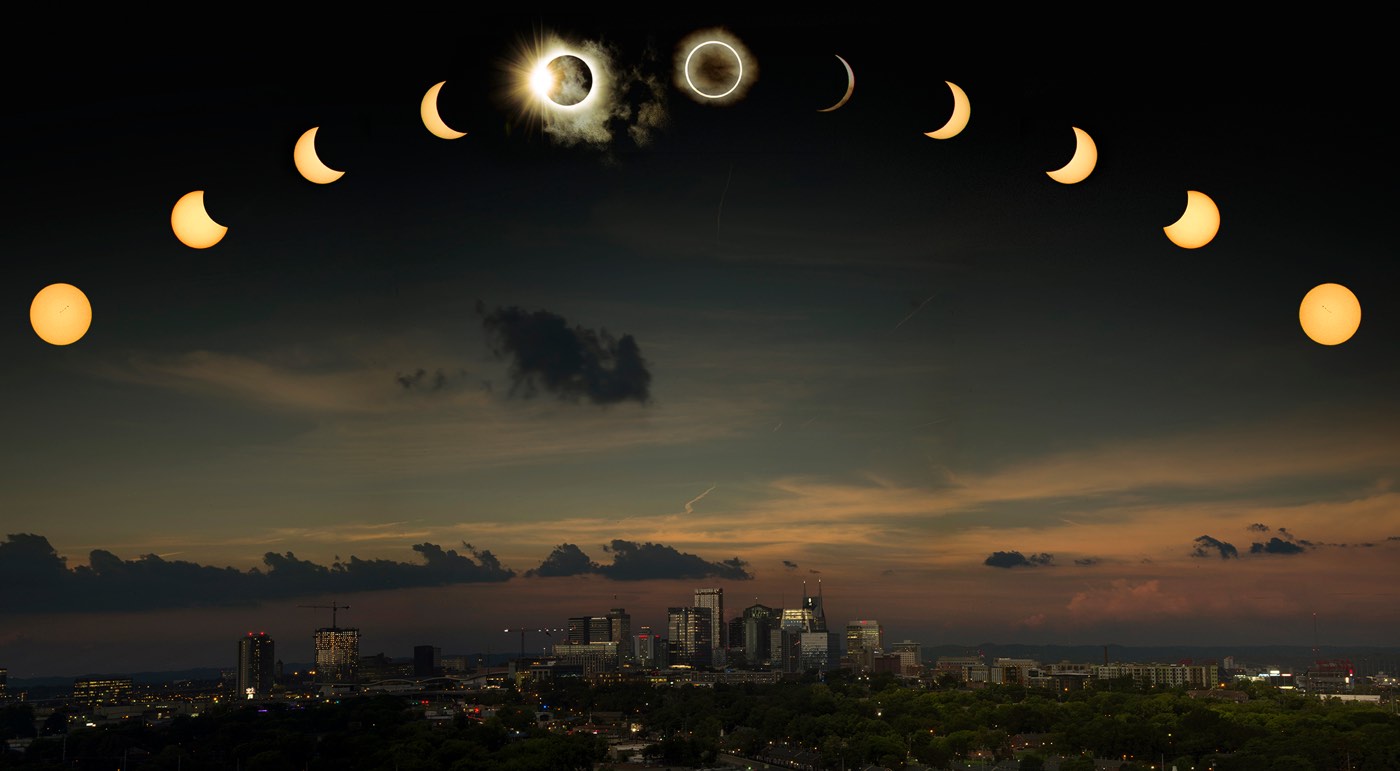Stars are pretty much always constant, so sometimes you need to spice things up a little bit. Here are some cool astronomical events that only happen every once in awhile:
Solar Eclipse:
After this August, I’m sure everyone in America knows what a solar eclipse is. But even so: a solar eclipse occurs when the moon passes directly in front of the sun.
There’s a long history of myth and mysticism behind solar eclipses, but they’re actually pretty common- there are usually 2-3 solar eclipses per year. Solar eclipses are only considered rare because the shadows they cast (where the eclipse is visible) are really small compared to the size of the Earth. Luckily for us Pennsylvanians, there will be another eclipse passing through very soon! In April 2024, the path of a total solar eclipse will pass right over Erie, PA.
- Something to keep in mind: looking directly at the sun requires a special type of glasses. Without these, you run the risk of severely damaging your vision.
Lunar Eclipse:

Lunar eclipses are pretty much the exact opposite of a solar eclipse- the Earth eclipses the Sun, and covers the moon in its shadow. To us, the moon looks blood red- a byproduct of light passing through the Earth’s atmosphere. While lunar eclipses occur at the same frequency as solar eclipses, they aren’t considered as rare because they’re visible from half of the Earth. (It’s the half that’s dark, by the way.)
- All you need is a clear sky 🙂
Meteor Showers
If you’ve spent any time stargazing, I can guarantee you’ve seen a meteor or twenty. About 25 million meteors pass through the Earth’s atmosphere every day, so it’s no surprise that you’ll see a few here or there. However, there are certain times of the year that there is an increase in meteors- often called meteor showers. These meteor showers occur when the orbits of Earth and the disintegrated remains of comics overlap, and happen very consistently. Here are some common meteor shower dates and locations:
- Quadrantids- First week of January in the Bootes constellation.
- Lyrids- April 16-26 in the Lyra constellation
- Perseids- August 11-13 in the constellation Perseus
- Orionids- October 21-22 in the constellation Orion
- Geminids- December 13-14 in the constellation Gemini
- Ursids- December 22-23 in the constellation Ursa Minor.
- Meteors are best viewed on a clear night with just your naked eyes.
Comets
Speaking of, comets are another amazing astronomical vent to witness. Comets in reality are just dirty snowballs, but when they get close enough to the Sun (where we see them), the heat from our star vaporizes them and creates magnificent tails of gas that arc across our sky. Comets come from the far reaches of our solar system (the Kuiper Belt and the Oort Cloud), so they aren’t super common. While they do go around the sun in orbits, their paths are so eccentric that it can take anywhere from tens to thousands of years for a comet to make a round trip.
Here are some comets that will be visible in the future:
- Giacobini-Zinner- June 2018 in the constellation Cygnus. Visible with modest-sized telescopes.
- Stephen-Orterma- November 2018 in the constellation Gemini. Visible with telescopes and some binoculars.
- Wirtanen- December 12, 2018 in Taurus. This will be well within naked eye visibility, and the brightest comet in five year.
- While some comets are bright enough that they are visible with the naked eye, many require telescopes or binoculars for viewing.
There are other cool events- supernovae, sunspots, etc that are viewable, but unfortunately, completely random. It’s a happy surprise when they’re viewable, so keep your eyes open. Happy stargazing!
Resources:

